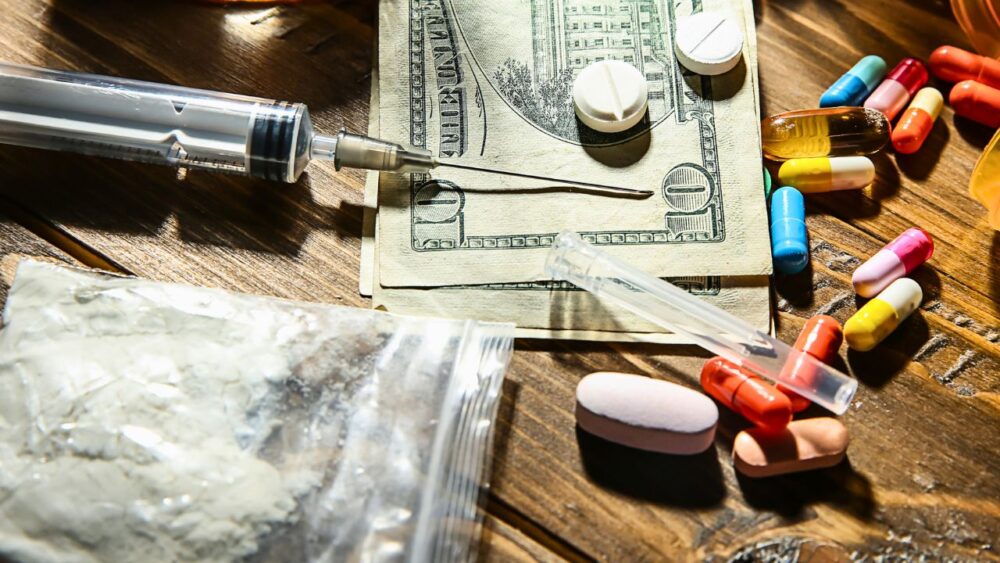While overall teen drug use in America has declined since 2020, a troubling new trend points to a spike in the use of some of the country’s most dangerous drugs.
A study conducted by Jack Genesin Consulting found that drug use among American teenagers between the ages of 12 to 17 dropped 10.8% from 2019 to 2023, falling from 4.28 million total users to 3.82 million.
Prescription drug use saw some of the biggest declines in that same time period: benzodiazepines – like Xanax or Klonopin – use dropped by 70%, tranquilizers by 69%, and prescription stimulants – like Adderall or Vyvanse – dropped by 46%.
While the overall decline in teen drug use is a positive trend, previously covered by The Dallas Express, new data reveals a more troubling shift beneath the surface.
Between 2022 and 2023 alone, teen use of sedatives specifically surged by 151%, methamphetamine use rose by 116%, and fentanyl use jumped by 80%.
These alarming year-over-year spikes suggest a changing culture within the country’s youth, with powerful and highly addictive substances finding new popularity.
“This data shows a complex picture of teen drug use in America. While the five-year trend is positive overall, the sharp increases more recently, between 2022 and 2023, for several dangerous substances reveal an immediate need for attention, especially considering the dramatic rise in sedative and methamphetamine use in just one year,” said Jack Genesin, director of the consulting firm behind the study.
According to data analysed by Jack Genesin Consulting, “sedatives” saw the steepest increase of use, with users jumping from 27,000 to 68,000 in just a single year. More than half of the users recorded, approximately 37,000, were teenage girls.
Methamphetamine use more than doubled over the same period, from 18,000 to 39,000 users. Unlike sedatives, meth use was more common among boys, who made up just over half of the user base in the report.
Fentanyl, the terrifyingly potent synthetic opioid often mixed with other substances and widely blamed for a national overdose crisis, saw an 80% increase in use among teens, from 20,000 to 36,000 users.
Experts warn this trend is especially dangerous, as even trace amounts of fentanyl can be fatal, and the drug is often masked under the guise of a different drug for many teens. The One Pill Kills campaign continued to try and shed light on the fentanyl epidemic currently ravaging America, with many stories of teens dying because they consumed a pill they thought had no connection to fentanyl whatsoever.
Furthermore, Cocaine use among teens rose 57% from 2022 to 2023, despite showing a long-term five-year decline; PCP usage increased nearly 47%, and abuse of pain pills rose 40%.
While some substances like marijuana, inhalants, and hallucinogens trended downward over the five-year span, the recent uptick in harder drug use has raised red flags with health experts.
“Our findings also reveal a particularly high rate of drug use among teenage girls compared to boys. Among the drugs whose use has increased the most in recent years, only methamphetamine is more commonly abused by boys, while sedatives, opioids, and cocaine are mostly used by girls,” Genesin explained.
Opioid use only saw only a marginal increase, up 1.4% from 2019 to 2023. The majority of users in this category were also girls, accounting for 332,000 out of 574,000 total teen users in 2023.
The study’s findings are based on the Substance Abuse and Mental Health Services Administration’s (SAMHSA) 2023 National Survey on Drug Use and Health (NSDUH), which collected self-reported data from teens across the country.
Analysts examined trends by drug type and gender over a five-year period, with a particular focus on changes or trends between 2022 and 2023.
In 2023, marijuana remained the most used drug among teens, with 2.89 million users. But even cannabis saw a decline of 11.9% since 2019.
For the future of America, the mixed results of the report may present a big dual challenge: continuing to push long-term prevention strategies for teens while addressing the factors driving recent spikes in more dangerous drugs.
“These substances can have profound negative impacts on developing brains, not to mention their association with risky behaviors and potential for addiction. The increase in illegal fentanyl use also represents one of the most serious public health threats, given its extremely high potency and the rising number of overdose deaths attributed to this substance among young people,” Genesin added.


